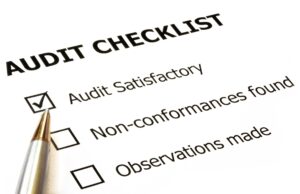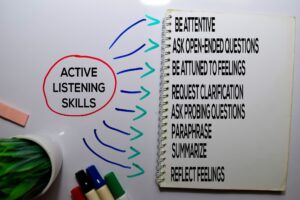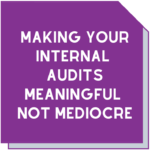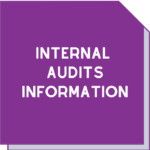Resistance is futile: how to ace your internal audit
 We all know the feeling when an external assessment is coming up. The scurrying search for documents, the interminable hours of scanning, the crossing of eyes and slurping of teas…
We all know the feeling when an external assessment is coming up. The scurrying search for documents, the interminable hours of scanning, the crossing of eyes and slurping of teas…
But what about internal audits? Your colleagues do these. They’re all on your side so you’re bound to get a free pass on some of those pesky details, right?
Well…. no.
For an organisation or lab that holds NATA accreditation or certification to an ISO standard, internal audits are a mandatory requirement for holding onto that endorsement.
ISO requirements state that there must be an audit program in place, with audit results reported to management. So maybe that free pass you’re hoping for might not be what management are looking for from an internal audit. They’d like to know the problems first, before the external auditors.
Other requirements are that the audit must be documented and reports retained. Any problems identified must be promptly addressed and actions taken.
Know your why
But other than compliance, there are good reasons why a business should carry out internal audits.
For instance, audits can investigate the cause of problems. They can check that actions put in place to prevent these problems re-occurring are working.
Plus, the business can identify opportunities to improve the system or its implementation.
So why are you doing audits? Certainly, it’s for compliance, and maybe it’s to investigate problems. But also, it’s an effective method of providing insights and a basis to add value and improvement.
Regular and often
Like brushing your teeth, internal audits should occur regularly and often. An annual internal audit blitz sometimes serves no purpose other than annoying staff and increasing tension. Keep your audits short and simple.
For those tasked with carrying out internal audits, obviously preparation is critical. But what else do you need?
Here are some tips to guide your internal audit travels.
Know your scope
This gives you a clear picture of what to audit. Stepping outside the scope for the auditee is inefficient and confusing. It can also make them feel awkward and like they’re being set up.
Develop your plan and break the process down into manageable steps. The truth is out there.
Know your tools
Do you know what the auditor’s tools are? Make sure you have everything you need for carrying out a successful audit.
These include the procedure, standard, checklist and a document to write down findings.
Should it be you?
Auditing is about perseverance not persecution. Before you get started, be honest – are you the right person for the job?
For example, do you:
- Have the people and technical skills and the right mindset?
- Know how to ask questions and what questions to ask?
- Deal with resistant or reluctant people in a diplomatic manner?
- Pay attention to details?
These are critical skills for making the most of an internal audit opportunity.
Even if you have some training, have the self-awareness to be honest about this point.
Be brave
You know the culture of your organisation and you CAN handle the truth. You may need courage to raise difficult matters because even if your colleagues are reluctant to share, you can’t be.
But remember you’re not Picard facing down the Borg – this is about fact finding, not fault finding.
Also remember that a well-designed audit will reveal any weaknesses in a process – there’s no need to go hunting for them.
 Listen loudly
Listen loudly
Listening is a highly underrated skill but a vital one for an auditor. Allow the auditee time to formulate their response. Don’t assume or make something up because you want to get through the audit. Have patience!
Remember this is also an opportunity to discuss issues faced by the auditee. People know their own roles and are the best source of information for improvement.
For example, they may have identified a gap in the system which could result in an issue further down the track. Or they could have ideas about recording of information using a new piece of technology.
Everyone has expertise and this should be sought and valued.
Communicating findings
Once you’ve completed your audit, communicate the results promptly. Don’t leave auditees in the dark about the outcome.
Be sure to put emphasis on the right, important things.
Keep in mind you’re not an external auditor – balance positives and negatives.
Maybe you need help
Hiring a consultant to carry out internal audits can be remarkably effective.
A consultant can undertake the audit with no preconceptions. They bring all the skills minus the emotion. And using a consultant means meeting compliance requirements without your staff losing time undertaking a task that isn’t focussed on their core activities.
We offer internal audit training and the details are on our training page. Or you can let us step in and take care of your internal auditing needs.
Contact us for an obligation free discussion about how we can help your business work better and smarter. Email info@masmanagementsystems.com.au or phone Maree on 0411 540 709 for confidential support and advice.
Remember, you don’t have to do this alone!
Download Resistance is futile – how to ace your internal audit
You can also check out our detailed guide about ISO 17025.


 Listen loudly
Listen loudly



